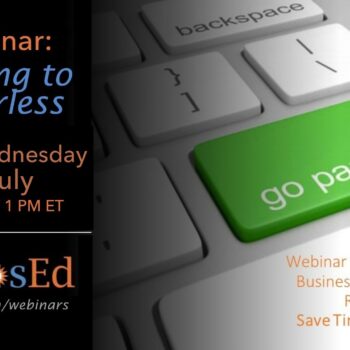
K-12 COVID Relief Funding Explained for 2021
- Posted by Jim Houliston
- On Mar 3, 2021
- 0 Comments
Schools hit with pandemic-related hardship have some good news: the newest Covid-19 relief package is providing economic aid to Education. Of the $900 billion federal stimulus bill, $82 billion goes towards Education. This includes:
- $54.3 billion for K-12 schools. This amount is nearly four times what schools received last year through the CARES Act.
- $7 billion to expand broadband access, $10 billion for child-care, and continued funding for school meal programs.
- $2.7 billion for private schools.
The bulk of this money will go directly to schools and districts based on how much funding they receive through Title I of the federal Every Student Succeeds Act. 10 percent can go to administration, leaving the rest for local education agencies. Like the CARES Act, this latest relief package allows for general use. Districts can essentially use it for anything under federal law for education. The measure mentions:
- Supporting school district efforts to improve preparedness.
- Aquiring personal protective equipment (PPE) and supplies needed to clean schools.
- Purchasing hardware and software for remote and hybrid learning and administration, like school HR software, school Business software, and electronic Onboarding.
- Addressing the specific needs of disadvantaged students living in poverty, learning English, experiencing homelessness, dealing with disabilities, or living in foster care.
- Providing services to support student mental health.
- Supporting afterschool and summer learning programs.
- Repairing school facilities, especially ventilation systems, to improve air quality.
In addition, governors will distribute $1.3 billion for public schools and higher education institutions most significantly impacted by the pandemic. Another $2.75 billion is going to private and parochial K-12 schools for equipment, training, staff and additional expenses.

Many schools are still struggling with delivering services, like physical or occupational therapy, meeting timelines for individualized education plans (IEPs), and even obtaining the federally-required signatures for those IEPs. A resolution that Congress passed provides $8 billion for child nutrition programs and extends school meals through September 2021. The current relief package also includes $13 billion for food banks and child nutrition programs, including an increase to SNAP benefits by 15 percent.
The Families First Act is temporarily increasing the federal match to states for Medicaid.
Millions of students lost access to an important source of health care with over 120,000 schools nationwide still closed. As school and health care providers work to put together solutions, congressional funding could deliver support. Medicaid covers 37 percent of school-age children and reimburses nearly $5 billion per year to schools. The Families First Act is temporarily increasing the federal match to states for Medicaid. To receive those funds, states must maintain eligibility standards and premiums.
The federal government now permits billing Medicaid for telehealth services and is urging states to expand their offerings. This allows students to receive special education services or visit health care providers virtually, limiting risky visits to a physical location. “State Medicaid programs can reimburse these providers for telehealth services just as they do for in-person visits without obtaining federal approval,” according to the Centers for Medicare and Medicaid Services (CMS). Some states though have restrictions on what services can be delivered in-person, especially for students with disabilities.
In light of COVID-19, schools are reconsidering their administration processes.
Schools who have already gone paperless with web-based, education HR software are able to efficiently work remotely and minimize physical contact, a mandate for most schools right now. While saving money and ensuring anywhere-access have always been two of the biggest benefits to going paperless, the latest benefit is avoiding the Coronavirus, since physical paper can harbor the virus for up to 24 hours. We’re happy to see schools are receiving the funds they need to help keep teachers teaching and their students learning. And none of this happens without a well-working administration team. If your team needs safe, remote solutions designed just for K-12, visit HeliosEd.com for a free demo!



0 Comments